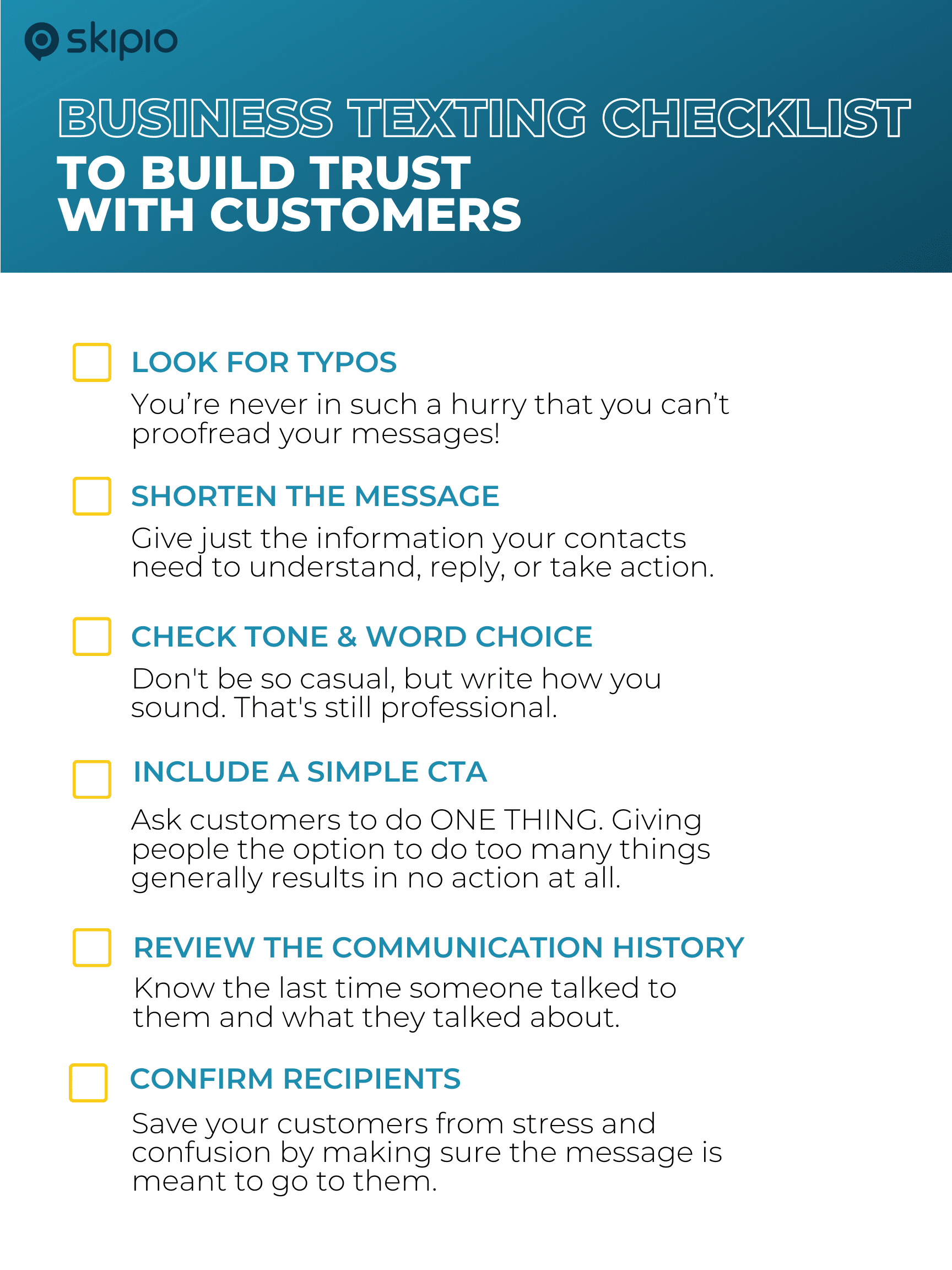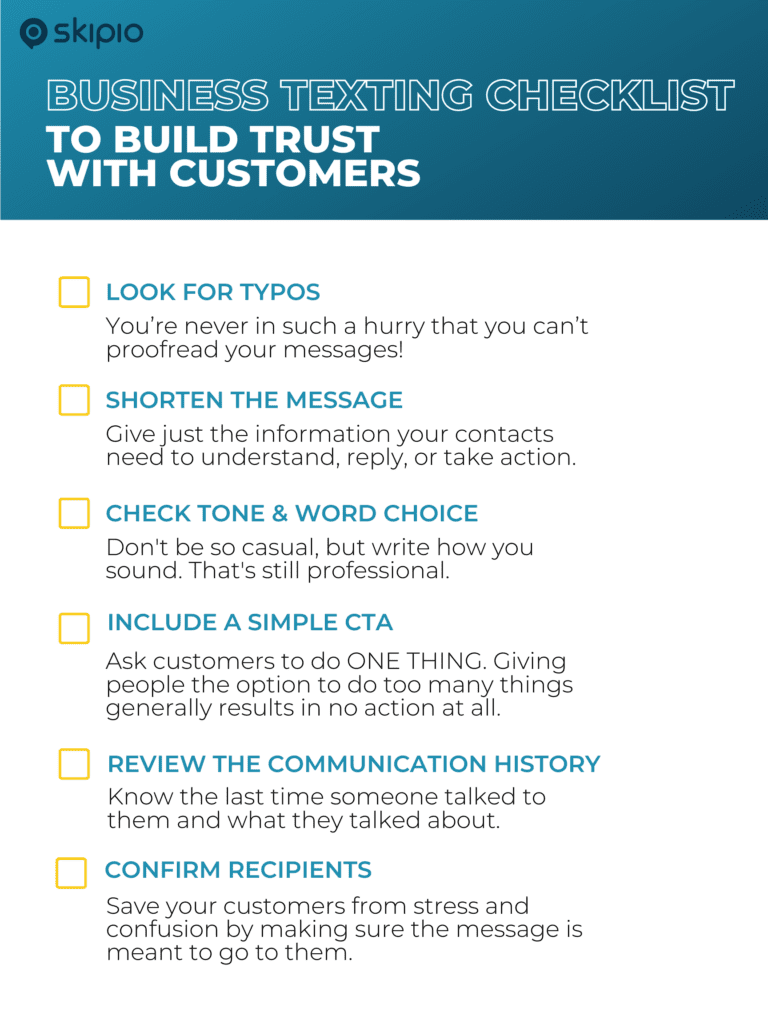
The right text message sent to the right customers at the right time absolutely increases trust in you and what you sell.
No matter your role or why you’re texting someone — whether it’s for marketing, lead nurturing, retention, or something entirely different — you get more replies and solidify your customer relationships when you do each of these things.
Consider this your foundational business texting checklist.
Look for typos
Even when using a template, read over what you typed once and then again and maybe one more time for good measure.
Sure, a small typo might show you’re human. But certain auto-complete typos could really mess things up for you.
You’re never in such a hurry that you can’t proofread!
Shorten the message
The shorter your text messages, the better. Give just the information your contacts need to understand and reply or take action.
Cut information like…
Introductions: Cut intros if you’re texting people you’ve had text conversations with before.
Questions: If you’re asking multiple questions, ask just one.
Links: This is extra important if it’s not an established conversation. Links, particularly shortened ones, look spammy. You save characters and get more replies by not including a link unless absolutely necessary in a first message to someone.
Signatures: You don’t need to provide people all of your contact information at the end of a text message. That makes it look robotic like email.
Check your tone and word choice
Your team and company may utilize a brand style guide that includes tone and voice guidance for all communication. But within those guidelines you should still have flexibility to write text messages the way you speak.
Don’t be so casual like you’d sound when making weekend plans with your best friend. But write naturally. That’s not in opposition to being professional.
Text like a human and you build more trust because people know they can count on you.
Include a simple CTA
Ask customers to do ONE THING. Whatever it is, keep it simple and singular.
Giving people the option to do too many things generally results in no action at all.
Similarly, too often we associate a “call to action” with purchases or sign-ups. Those are valid actions you might want people to take. Just keep in mind that there’s countless other actions you might hope for someone to do.
Maybe that’s to reply, schedule a consultation, log in to their account, follow you on social media… The list goes on.
Check the last time anyone communicated with them
Context matters! Understanding the communication history can help you write a better message.
Has it been ages since someone reached out? Or maybe someone from the customer success team has been talking with them each week?
You don’t want to text someone with an offer to upgrade if you know they’ve been having a problem that’s still unsolved.
Or if it’s been a while since anyone talked with a customer, you want to make sure your message is actually relevant to them.
Confirm the recipients
No hitting the undo button with a text. Whether you want to send this message to one person or a group of customers, do yourself a favor of making sure you’re sending it to the exact right person/people.
Not only do highly targeted text messages outperform generic messaging, but you save your customers from stress and confusion by making sure the message is meant to go to them.
Keep learning text messaging best practices for marketing and sales
Whether you’re a veteran at conversational business texting or just starting out, you need to keep using best practices to get people to engage with you. By following the items in the business texting checklist, you give yourself the best chance of having genuine conversations with your customers.
Click here or the image below to download the checklist — no formfill required.




